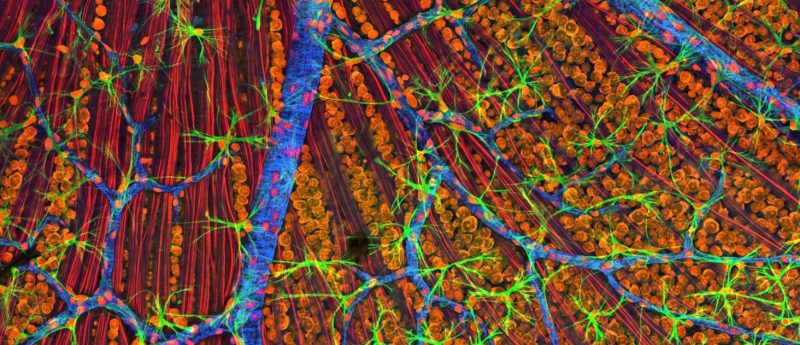The rule of three: a trisection approach to in vitro retinal generation

Promising protocol may lead to advances in retinal research and regenerative therapies
Stem cell scientists have made great leaps in recent years towards in vitro generation of retinal cells and even whole retinas. In a recent study published in Stem Cell Reports, a team of researchers from Germany describe a novel protocol which allows efficient generation of large, 3D-stratified retinal organoids and may overcome a number of previous limitations. It is hoped this protocol will facilitate future retina research and regenerative medicine approaches.
In this study, the team developed a protocol to encourage organoidogenesis of large, complex, 3D retinas from wild-type mouse embryonic stem cells (mESCs) without requiring the formation of optic-vesicle or optic-cup structures, a known limiting factor. Researchers investigated the efficacy of introducing a trisection stage into a known mini-retina protocol; a process which involved cutting a retina organoid grown from mESCs into three pieces on day 10 of development. Retinal neurogenesis was then observed until day 21.
Following trisection, the majority of organoids were observed to develop into large, continuous epithelial structures, resulting in the efficient formation of high numbers of large, stratified retinal organoids within 21 days. The developed organoids displayed stratified architecture, which the authors noted to be comparable with that found in early postnatal retina in vivo. When compared with previous protocols, the trisection step was suggested to have resulted in a two-fold increase in differentiated, large, stratified retinal organoids versus starting aggregates achieved by day 21. However, approximately a third of trisected organoids were observed to degrade before day 21 during media changes or specimen fixation.
Given their positive data, the authors express hope that their neuroepithelium trisection approach will be applicable to current and future 3D retinal organoid systems, providing significant advantages over mESC protocols currently available, including: full flexibility for application of fluorescent reporters; robust yields and retina sizes; and organoids with stratified retinal tissue. However, maintenance and maturation of the retinal domain inside the mother aggregate, as carried out in this study, appears to be disadvantageous for development of inner retinal cell types and layers. This would be problematic for studies requiring complete retinal structures.
Discussing his group’s work and hopes for its future, senior author Mike Karl (German Center for Neurodegenerative Diseases, Dresden, Germany) stated: “Even with our new additions to existing organoid systems, we have not yet reached that tipping point of robustness that we need for people without the expertise to grow these models. By working out the details, we also hope to help those who are not developmentally or stem cell-minded to just go and study what they want.”
The team’s next steps will be to apply and optimize the trisection protocol to human retinal organoid systems, with the hope of its utilization in research on human neuronal development, disease modeling, tissue repair and potential for translational therapies.
Written by Hannah Wilson
Sources: Völkner M, Zschätzsch M, Rostovskaya M et al., Retinal Organoids from Pluripotent Stem Cells Efficiently Recapitulate Retinogenesis, Stem Cell Reports. doi: j.stemcr.2016.03.001 (2016) (Epub ahead of print); Cell Press News Release www.eurekalert.org/pub_releases/2016-03/cp-3g032416.php